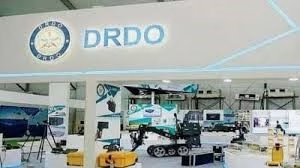In today’s tech-obsessed world, we often overlook one inconvenient truth: our digital lives leave a massive carbon footprint. Every email, streamed video, or AI model we run depends on power-hungry data centers. But what if the future of cloud computing wasn’t just about being faster or smarter — but greener?
That’s where quantum sensors enter the chat.
These ultra-sensitive devices are becoming unexpected heroes in the quest to revolutionize cloud infrastructure. They’re helping us unlock the dream of green cloud computing — efficient, self-monitoring, and environmentally responsible data centers.
Let’s break it down.
🌱 The Cloud Isn’t as Green as It Seems
The cloud feels invisible — until you realize it’s grounded in millions of servers running 24/7 in massive buildings across the globe.
Data centers currently consume 3–5% of global electricity, and that number is climbing fast. Cooling systems, networking equipment, and backup generators burn serious energy, often powered by fossil fuels.
Tech giants like Google, Amazon, and Microsoft have started investing in renewable energy and carbon offsetting, but the problem goes deeper than just switching to solar. We need smarter systems that optimize themselves — and this is where quantum sensing comes in.
🧠 What Are Quantum Sensors (In Plain English)?
Imagine a sensor so sensitive it can detect the tiniest changes in magnetic fields, temperature, or pressure — down to atomic levels. That’s what quantum sensors do.
Instead of relying on traditional electrical measurements, they tap into the bizarre physics of quantum mechanics — things like superposition and entanglement — to measure the environment with insane precision.
They’ve been used in scientific research, defense, and medicine — but now, they’re starting to make their way into the world of cloud infrastructure.
🛰️ How Quantum Sensors Can Green Up Data Centers
Here’s where it gets exciting. Data centers rely heavily on:
- Temperature control
- Power distribution
- Vibration monitoring
- Security systems
Traditional sensors get the job done — but quantum sensors can do it better, faster, and more efficiently. Here’s how:
🔹 Smart Cooling Systems
Quantum sensors can detect even the tiniest temperature fluctuations in real time. This means cooling systems can dynamically adjust, only using energy when and where it’s actually needed.
🔹 Energy Usage Optimization
Power consumption isn’t uniform across a data center. Quantum-level monitoring allows for ultra-precise tracking of power flows, identifying inefficiencies that would otherwise go unnoticed.
🔹 Infrastructure Health
Quantum vibration sensors can monitor the physical integrity of server racks, hard drives, or HVAC systems, catching mechanical issues before they lead to catastrophic failure — and costly energy waste.
💡 Real-World Example: The Quantum-Powered Microgrid
Imagine a data center that isn’t just energy efficient, but also energy intelligent. In places like Scandinavia and Singapore, experimental setups are combining quantum sensors with AI and edge computing to create microgrids — small-scale, self-regulating power systems.
These systems can:
- Prioritize clean energy usage
- Predict peak loads before they happen
- Shut down non-essential processes during high energy demand
It’s a model of resilience, intelligence, and sustainability.
🌍 Why This Matters for Our Digital Future
Let’s be honest: the future is only going to be more data-driven. With AI models growing exponentially, virtual reality on the rise, and more devices joining the Internet of Things, the pressure on our cloud infrastructure is intense.
By integrating quantum sensing into cloud computing, we’re not just making things faster — we’re making them smarter and greener.
This isn’t a moonshot; it’s a necessary evolution if we want our tech to keep up without burning out the planet.
🚀 Wrapping Up: Quantum Tech Meets Climate Tech
Green cloud computing isn’t a trend — it’s a technological necessity. And quantum sensors, though not often in the spotlight, could be key players in this quiet revolution.
From optimizing cooling systems to enabling smart microgrids, these next-gen sensors are helping turn massive, power-hungry data centers into lean, sustainable machines — all while supporting our endlessly growing appetite for data.
So the next time you stream your favorite series or run a prompt on an AI chatbot, just remember — the future of cloud computing is not just quantum-powered… it’s green-powered.





